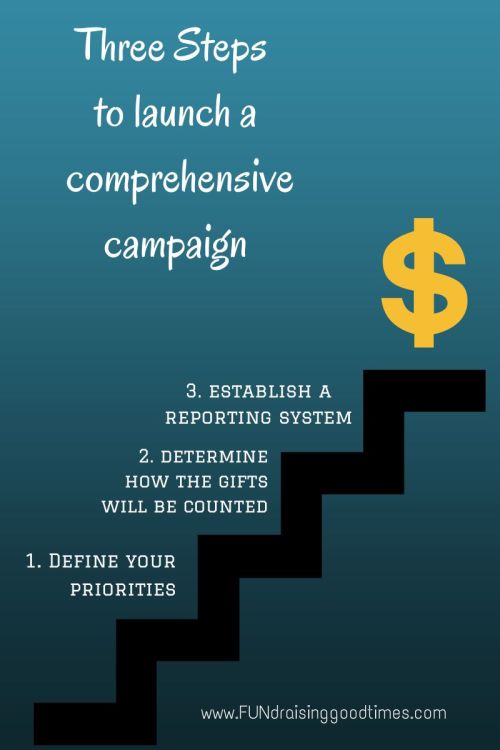Part two of a two part series….Read part One: Four Benefits of a Comprehensive Fundraising Campaign
We were taken aback when, in casual conversation, an acquaintance blurted out, “comprehensive campaigns are nothing but a con game.” We listened as he shared his experience of institutions that report campaign success but don’t have the money needed to implement projects laid out as campaign priorities.
While we wouldn’t be so blunt in our assessment, we do agree that a lot can happen in a comprehensive campaign that leaves donors and the community confused and feeling misled. But, comprehensive campaigns don’t have to end that way. We present the following example to share three steps you can take to ensure your campaign meets its goals and has the money to implement priorities.
Let’s say a nonprofit provides healthcare for children ages birth to three years old. It launches a three year $20 million comprehensive campaign for the following: $9 million for annual operations for three years ($3 million a year), $6 million for capital costs for a new medical facility, and $5 million to endow future costs for pediatric services. During the campaign a local philanthropist wants to donate $15 million to provide healthcare services to uninsured local residents regardless of age, and a foundation wants to donate $6 million for childcare services. If the nonprofit accepts these gifts it will raise $21 million but there will be no money for annual operations, the medical facility or endowment of pediatric services. Would this be campaign success?
Consider these three steps before launching your campaign. First, be clear on what you are raising money for. Define your priorities and how much you need to raise for each.
Second, determine which gifts will be counted towards the campaign goal, and which will be counted as what we refer to as “over and above” gifts. For example, when you accept gifts that are outside campaign priorities record them, publicize them, but don’t count these towards your campaign goal as they cannot be used to finance campaign priorities. When you do raise the funds for your campaign priorities be sure to declare success and communicate that you met goal and raised funds for additional projects as well.
The third step is to establish a reporting system that can track how much has been raised towards each priority. Gifts should be appropriately recorded and tied to a priority. Management reports should clearly communicate this information so everyone is aware of overall campaign progress, and progress towards each specific priority.
Here’s our bottom line: Make sure your comprehensive campaign raises money for its stated priorities. Don’t be derailed by an abundance of non-priority related gifts. Be clear and transparent about how you account for gifts received. Decide how you define campaign success and communicate it clearly: don’t leave your community asking “where’s the money?”
Mel and Pearl Shaw are the authors of “Prerequisites for Fundraising Success” and “The Fundraiser’s Guide to Soliciting Gifts.” They provide fundraising counsel to nonprofits. Visit them at www.saadandshaw.com. Follow them on Twitter: @saadshaw.










